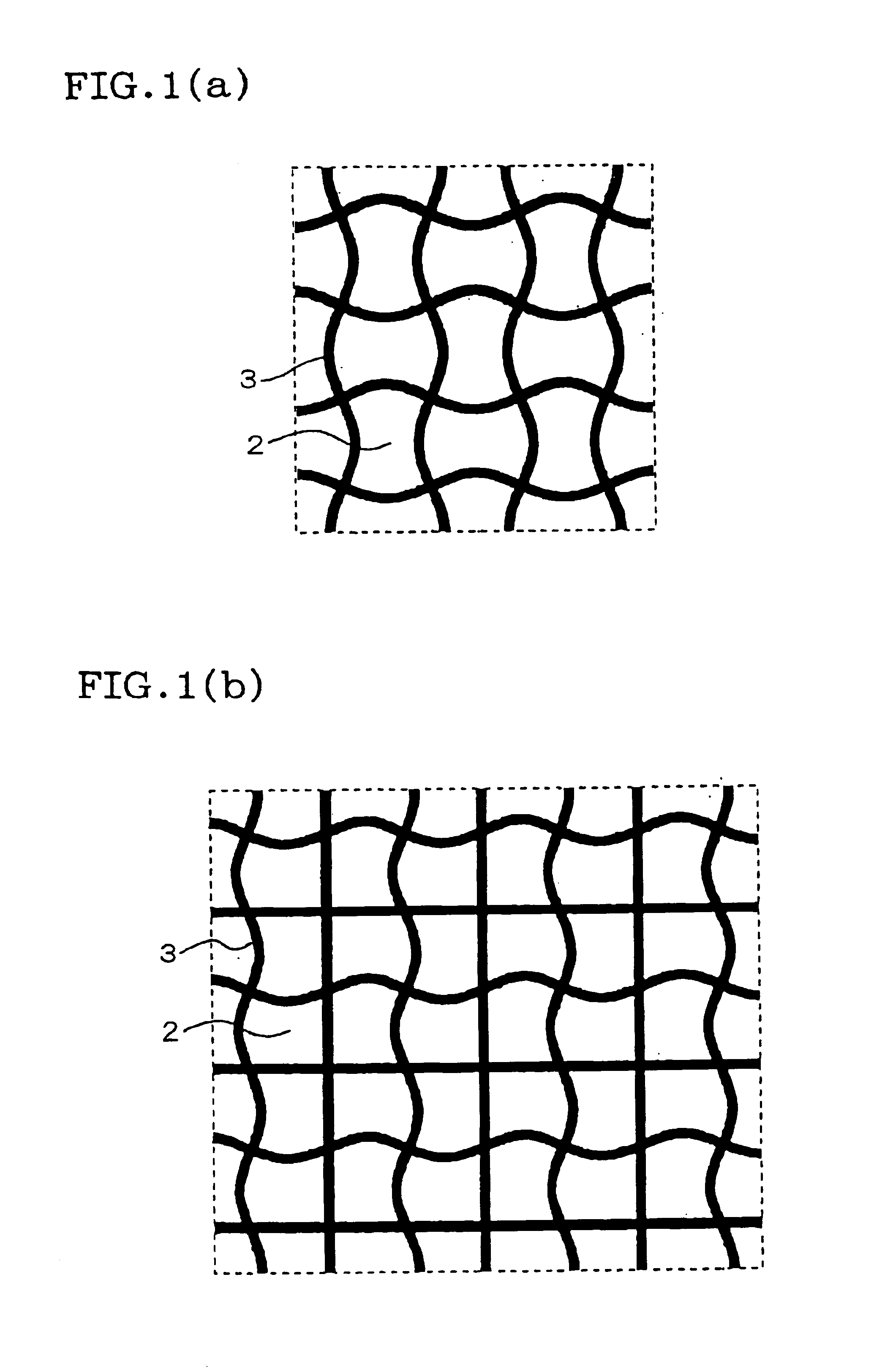Ceramic filter and filter device
a filter device and ceramic technology, applied in the field of ceramic filters, can solve the problems of large filter loss, large overall system complexity, and severe problems of filters containing oxide ceramic materials
- Summary
- Abstract
- Description
- Claims
- Application Information
AI Technical Summary
Benefits of technology
Problems solved by technology
Method used
Image
Examples
example 1
Disposition of the Anchor Substance Within the Ceramic Filter
A small honeycomb structure piece was cut from the central portion of cordierite DPF (which means the portion excluding the outer periphery and both side faces). The sample piece was immersed in a H3PO4 solution. After blowing off excessive H3PO4 solution with air, the sample piece was dried with a hot air stream, and fired at 700° C. in an electric furnace, thereby obtaining a honeycomb sample in which phosphorous (P) has been disposed within the partition walls of the small sample piece (referred to as a P-impregnated honeycomb sample). The content of P in the sample was 0.05 g / cc (honeycomb volume) as converted into P2O5.
example 2
Coating of the Anchor Substance on the Surface of the Ceramic Filter
A commercially available Al2O3 powder (specific surface area: 200 m2 / g) was immersed in a H3PO4 solution and, after stirring with a pot mill for 2 hours, moisture in the powder was evaporated off to dryness. The residual powder was crushed in a dry state followed by firing at 700° C. for 3 hours. An Al2O3 sol and water were added again to the powder of γ-Al2O3 impregnated with the P component, and the mixture was ground again in a wet state in the pot mill to prepare a wash-coat slurry. Then, the slurry was wash-coated on a small honeycomb piece as the same sample piece as used in Example 1, and the sample piece was dried. The sample piece was fired thereafter at 700° C. for 1 hour in an electric furnace, thereby obtaining a honeycomb sample in which phosphorous P (referred to as an anchor substance) was disposed on the surface of the partition wall of the honeycomb small piece (referred to as a P-coat honeycomb sam...
example 3
Filter Device Having the Pre-Filter
A cordierite honeycomb having a diameter of 144 mm and length of 70 mm, a thickness of the partition wall of 152 μm and a cell density of 62 cells / cm2 was impregnated with P by the same method as in Example 1 to obtain a pre-filter. A ceramic filter was also prepared by sealing a cordierite honeycomb, having a diameter of 144 mm and a length of 150 mm, a thickness of the partition wall of 305 μm and a cell density of 31 cells / cm2, of which cells are sealed alternately on an inlet side face and an outlet side face to form a checkered pattern on both sides. The ceramic filter was combined with the pre-filter, and cased in a can having an appropriate shape to obtain a filter device comprising the pre-filter and ceramic filter.
PUM
| Property | Measurement | Unit |
|---|---|---|
| thickness | aaaaa | aaaaa |
| thickness | aaaaa | aaaaa |
| thickness | aaaaa | aaaaa |
Abstract
Description
Claims
Application Information
 Login to View More
Login to View More - R&D
- Intellectual Property
- Life Sciences
- Materials
- Tech Scout
- Unparalleled Data Quality
- Higher Quality Content
- 60% Fewer Hallucinations
Browse by: Latest US Patents, China's latest patents, Technical Efficacy Thesaurus, Application Domain, Technology Topic, Popular Technical Reports.
© 2025 PatSnap. All rights reserved.Legal|Privacy policy|Modern Slavery Act Transparency Statement|Sitemap|About US| Contact US: help@patsnap.com


